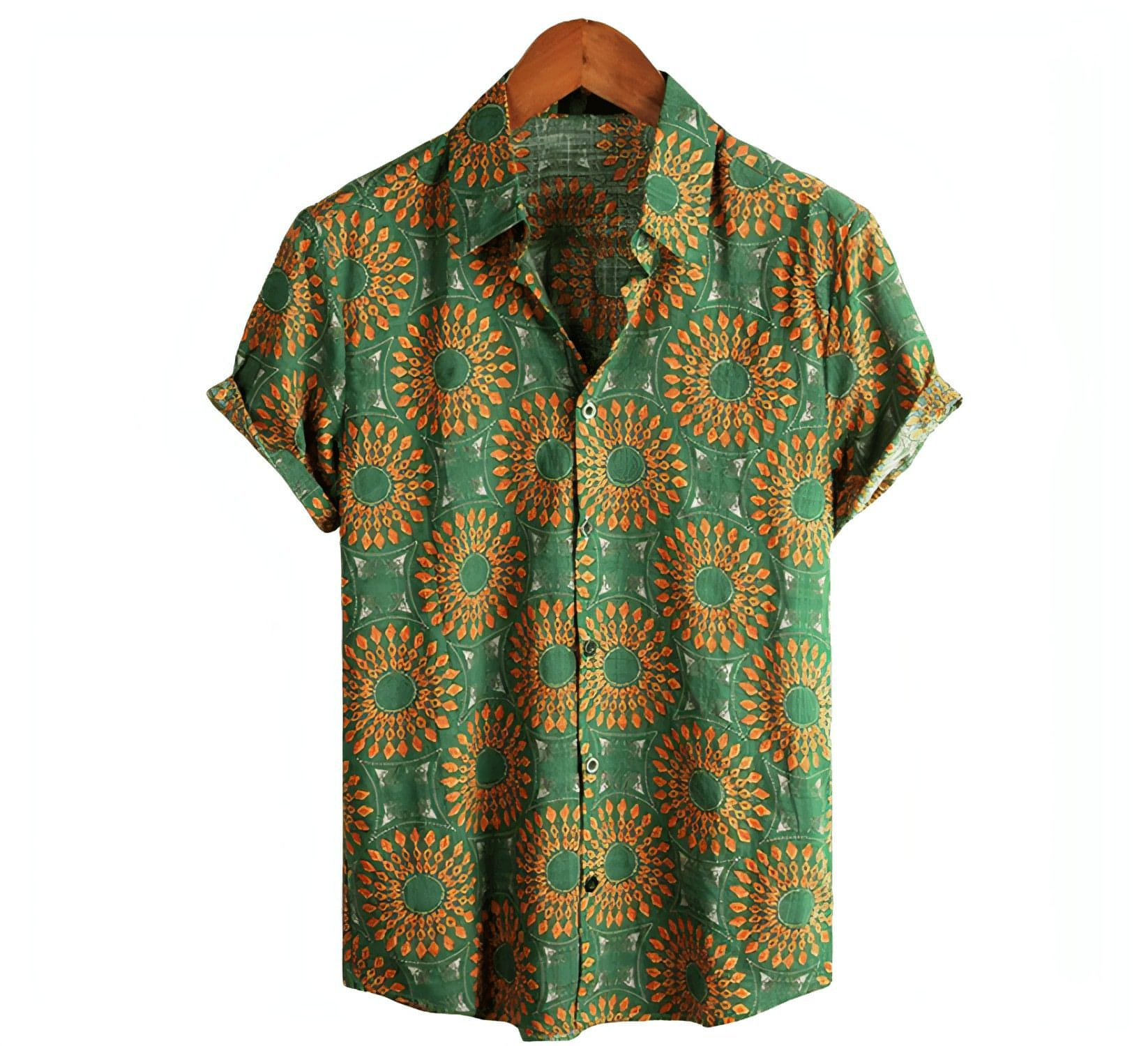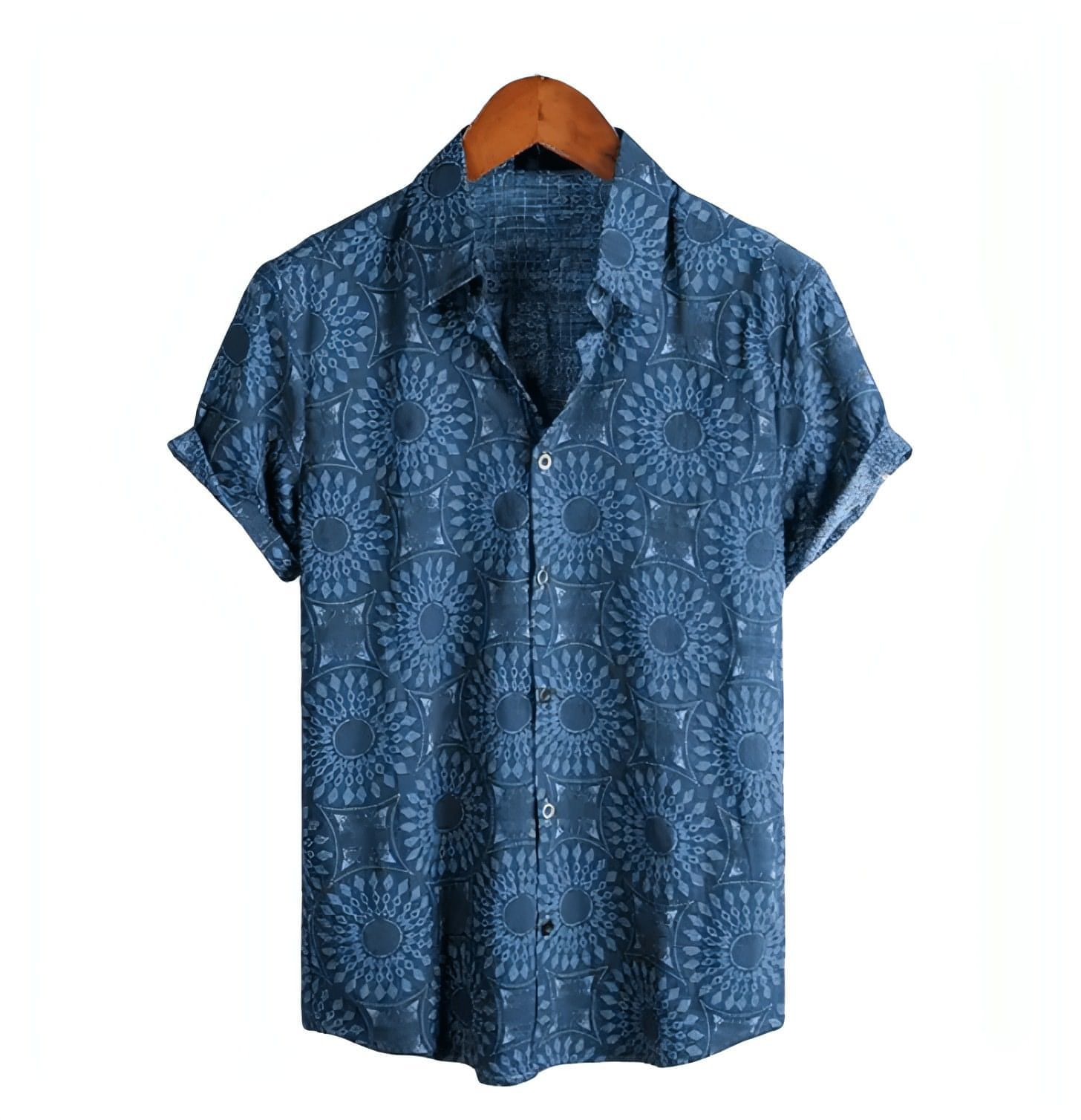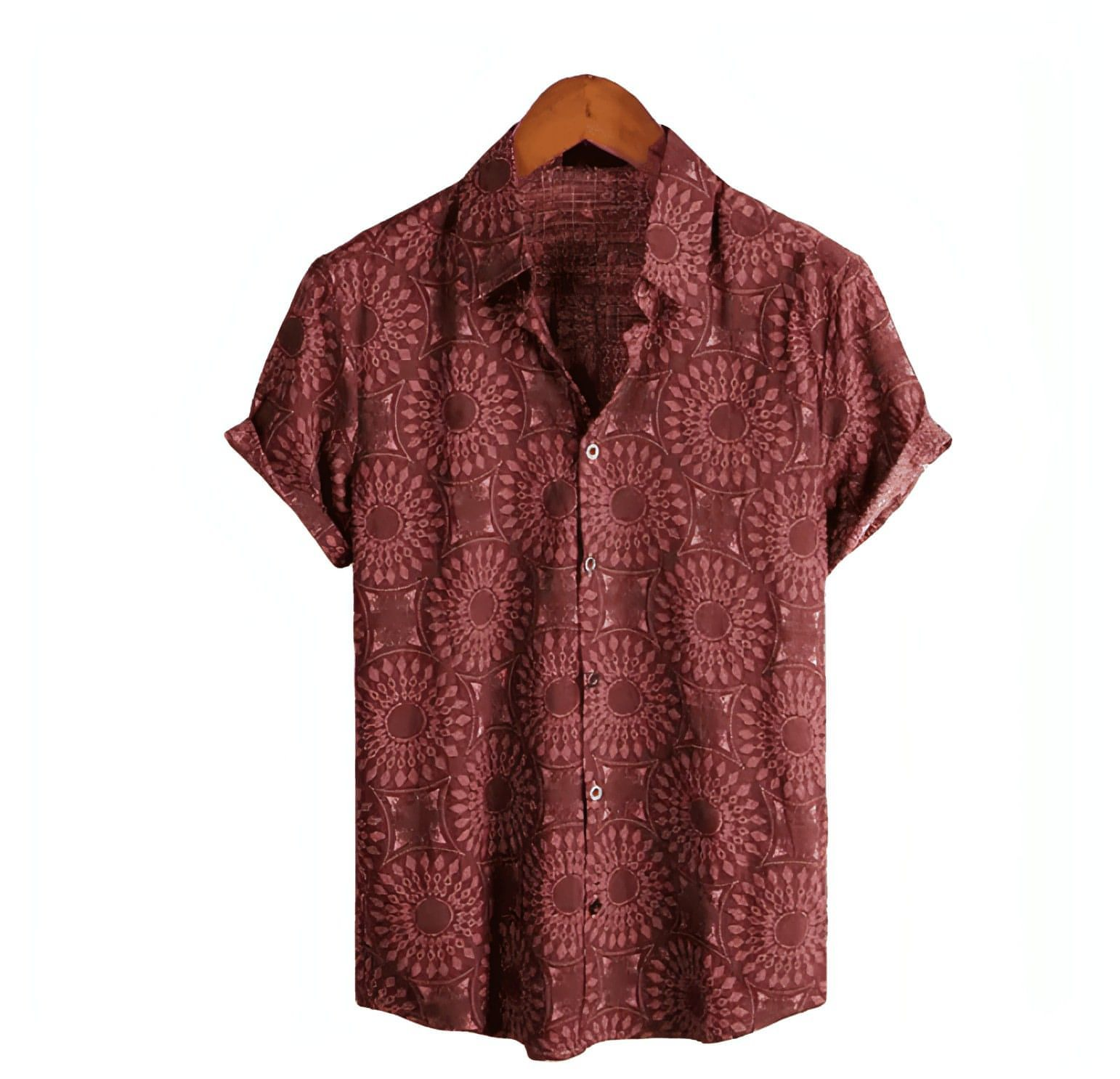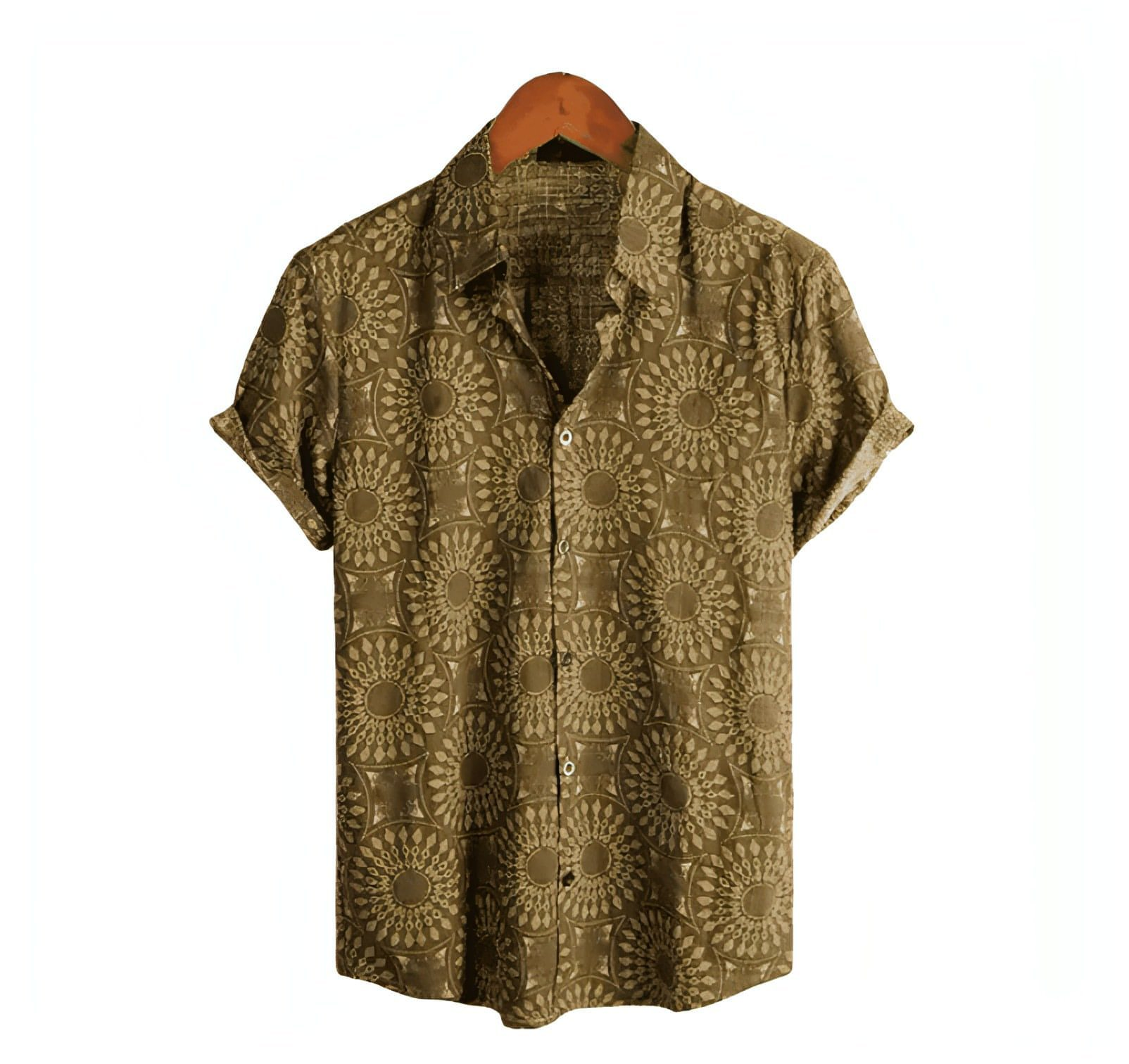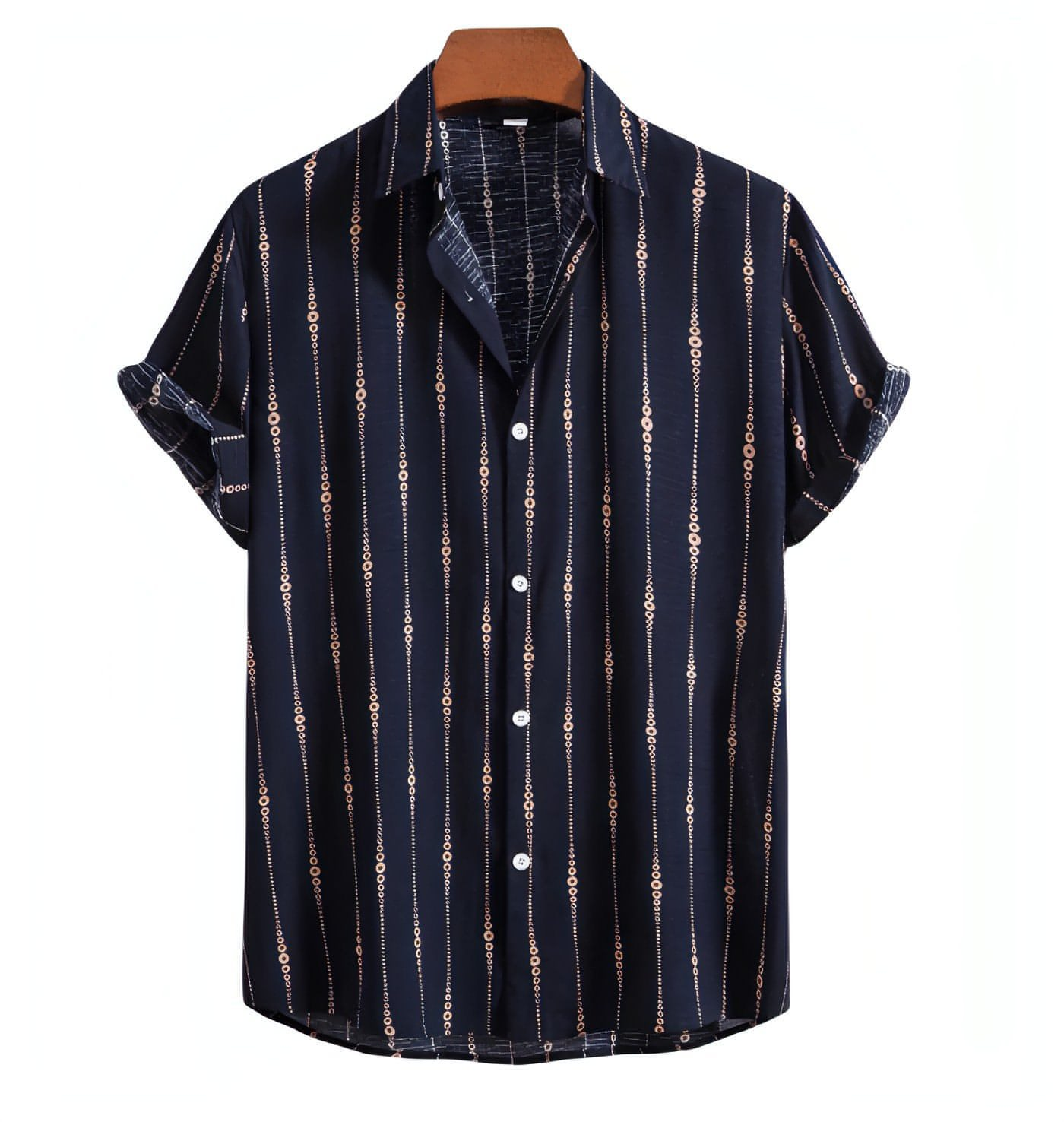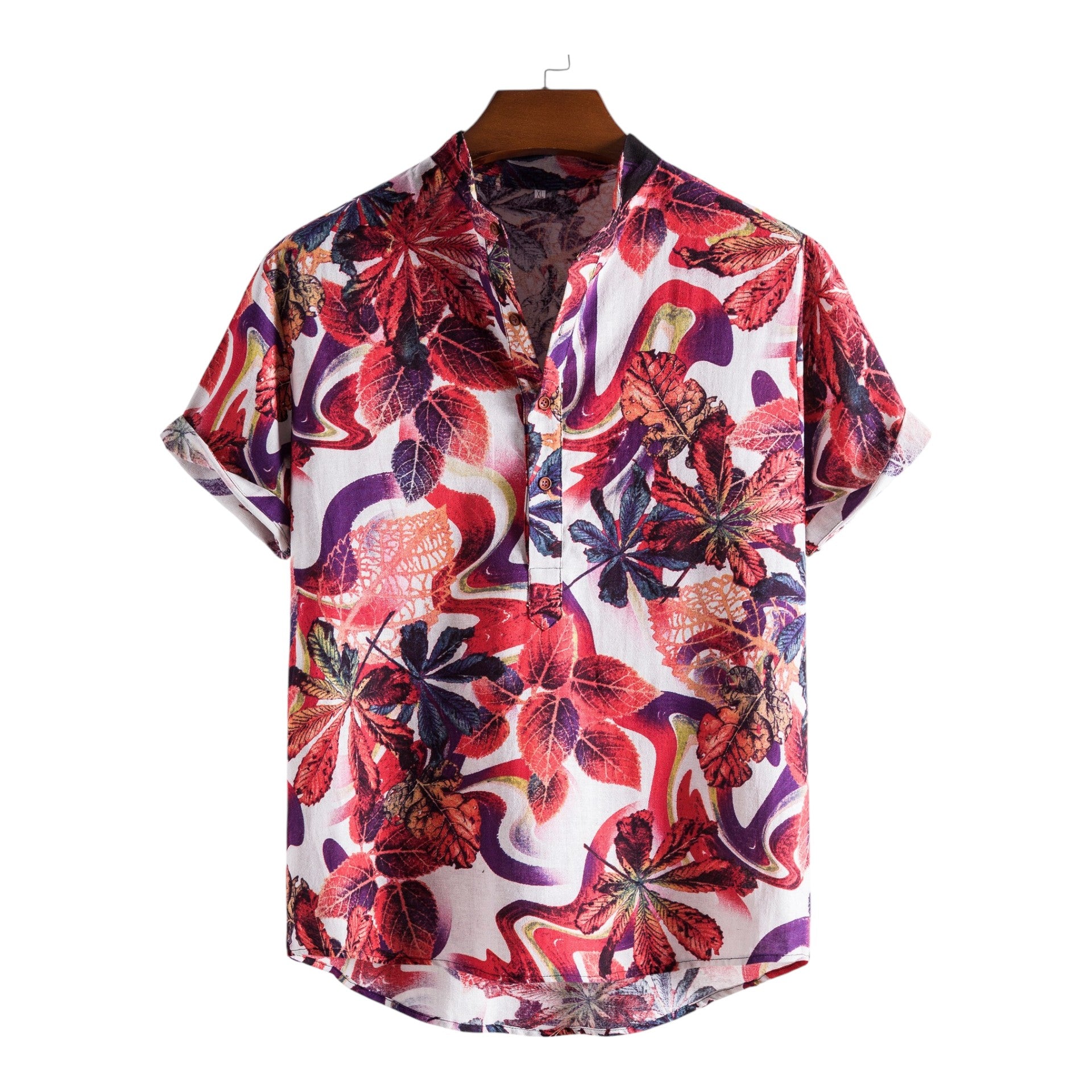Frequently Asked Questions
1. What is the origin of the Hawaiian shirt?
2. How did the popularity of Hawaiian shirts rise in the 1940s and 1950s?
3. What design elements were popular in Hawaiian shirts during the 1950s?
4. How did cultural movements in the 1960s and 1970s influence Hawaiian shirt designs?
5. What are some current trends in Hawaiian shirt designs?
The Hawaiian shirt has long been a beloved staple in casual fashion, embodying a carefree island lifestyle that many aspire to. Over the decades, these vibrant garments have evolved significantly in both design and cultural significance. In this article, we’ll explore the fascinating journey of Hawaiian shirts, making use of premium cotton shirts for men and showing how they have transformed into fashion statements worn by all. With this evolution in mind, let’s dive into the world of Hawaiian shirt designs and their place in men’s fashion over the years.
The Birth of the Hawaiian Shirt
Hawaiian shirts, often referred to as “Aloha shirts,” originated in the 1930s. Their creation was credited to local tailors in Hawaii who embraced a fusion of Western and Eastern design elements. The vibrant prints, characterized by floral patterns and tropical motifs, reflected the island's rich culture and natural beauty.
The earliest Hawaiian shirts were predominantly made from silk, offering a luxurious sheen that was perfect for vacationers seeking comfort and style. As tourism flourished in Hawaii, the demand for these shirts grew, leading to the introduction of less expensive materials, such as cotton and rayon. Today, premium cotton shirts for men have become a staple, making these colorful garments accessible to a wider audience.
The 1940s - 1950s: The Rise in Popularity
The post-war era saw a boom in the popularity of Hawaiian shirts. Returning soldiers who had been stationed in Hawaii began bringing these shirts back to the mainland, and they quickly became associated with leisure and vacations. It was in this period that the Hawaiian shirt for men transitioned from a tropical local novelty to a nationwide fashion trend.
During the 1950s, Hollywood further propelled this trend. Iconic movies that showcased Hawaii, like “From Here to Eternity,” featured leading men donning Hawaiian shirts, showcasing their bold patterns and vibrant colors. This discovery of Hawaiian shirts was more than just a clothing choice; it was a symbol of fun and escape, capturing the essence of island life.
Design Elements of the '50s
- Bold Patterns: The 1950s Hawaiian shirts often included palm trees, floral designs, and exotic wildlife.
- Bright Colors: Bright reds, blues, and greens dominated the fabrics, making these shirts ideal for beach outings.
- Short Sleeves: Typically featuring short sleeves and open collars, these shirts were comfortable and casual.
The 1960s - 1970s: Embracing Counterculture
As the '60s rolled into the '70s, Hawaiian shirts began to embrace a new cultural identity, influenced heavily by the counterculture movements of the time. Many people viewed them as symbols of rebellion against traditional dress codes.
During this time, artists and musicians adopted Hawaiian shirts as part of their unique fashion statements, adding to their widespread popularity. The shirts evolved to capture the spirit of the ‘60s with psychedelic colors and patterns.
Significant Influences
- Music and Art: Musicians like The Beach Boys popularized the laid-back Hawaiian aesthetic, while artists explored new designs that combined traditional motifs with modern themes.
- Variety of Fabrics: While cotton remained popular, the introduction of synthetics allowed for even more vibrant designs, making these shirts a canvas for creativity.
- Tailored Fit: The fit of Hawaiian shirts shifted to accommodate different body types, offering options for both loose and tailored fits.
The 1980s - 1990s: A Decline and Resurgence

As nostalgia set in, Hawaiian shirts found new life, partly due to popular television shows and the influence of surf culture which celebrated beachwear. The fun, vibrant designs were seen as a throwback to the happier beach days of the past.
Resurgence Elements
- Graphic Prints: Many designs began showcasing larger graphic prints, such as classic cartoons and surf scenes, making them appealing to the youth.
- Mix and Match: These shirts started to be paired with denim shorts and sported in casual settings, reflecting a laid-back lifestyle.
- Inclusion of Other Styles: Influencers began mixing these shirts with various styles, further solidifying their comeback into mainstream fashion.
The 2000s - Today: Modern Interpretation
The new millennium brought a fresh perspective to Hawaiian shirt designs. The blend of vintage aesthetics with modern influences resulted in a diverse range of styles that still retains the essence of Hawaiian culture. Today's premium cotton shirts for men are designed not only for comfort but also to make bold fashion statements.
With the growing trend of sustainability, many brands are now focusing on eco-friendly fabrics and producing Hawaiian shirts that are both stylish and environmentally conscious. The designs have become more refined with less emphasis on over-the-top graphics and more on sophisticated patterns that still pay homage to their origins.
Current Trends in Hawaiian Shirt Designs
- Minimalistic Patterns: Sleek, understated designs with tropical motifs allow for easy integration into everyday wardrobes.
- Fabric Innovation: A move towards breathable, lightweight fabrics that enhance comfort without sacrificing style.
- Inclusivity and Diversity: An emphasis on representing a broader scope of cultural designs and motifs, ensuring that Hawaiian shirts resonate with various audiences.
The Cultural Impact of Hawaiian Shirts
Beyond fashion, Hawaiian shirts signify a deep-rooted cultural connection to Aloha spirit and Hawaiian tradition. They serve as a reminder of the islands’ beauty and a representation of a lifestyle that values relaxation, adventure, and community.
In today's world, these shirts are worn not just for leisure but as expressions of individuality and as fashionable statements. The Hawaiian shirt finds a place in events, parties, and celebrations, highlighting its versatility and enduring appeal.
Aloha Spirit and Fashion
Understanding the cultural significance behind Hawaiian shirts adds a deeper appreciation when donning these garments. The rich history, from local craftsman contributions to popular Hollywood endorsements, showcases how fashion can evolve while still honoring its roots.
Wearing Hawaiian Shirts: Style Tips
Whether you’re looking to add a touch of island flair to your wardrobe or simply want to embrace the Hawaiian spirit, wearing Hawaiian shirts can be both enjoyable and stylish. Here are some tips to help you rock that aloha vibe:
- Pairing: Combine your Hawaiian shirt for men with denim shorts for a casual day out or layer with a solid-colored blazer for a slightly dressier look.
- Accessorizing: Don’t shy away from accessories like laid-back sandals or a straw hat to enhance that vacation feel.
- Fit Matters: Opt for a fit that flatters your body type; tailored Hawaiian shirts can elevate your casual ensemble without compromising comfort.
Ride the Wave of the Modern Hawaiian Shirt Culture
The evolution of Hawaiian shirt designs reflects the ever-changing nature of fashion while retaining the core essence of Hawaiian culture. From simple floral prints to the modern diverse styles we see today, these shirts have a unique story that continues to unfold. Whether you are donning a Hawaiian shirt for a summer party, vacation, or casual Friday, you are not only embracing a fashionable piece of clothing but also a rich history that spans decades.
By understanding the significance and trends surrounding Hawaiian shirts, you can elevate your wardrobe and connect with the playful spirit of the islands—making every day feel like a warm afternoon in Hawaii. So go ahead and explore the world of Hawaiian shirts, and as you do, remember the journey they’ve embarked on; from their origins to the modern day, they embody much more than just a style—they encapsulate the essence of Aloha.




